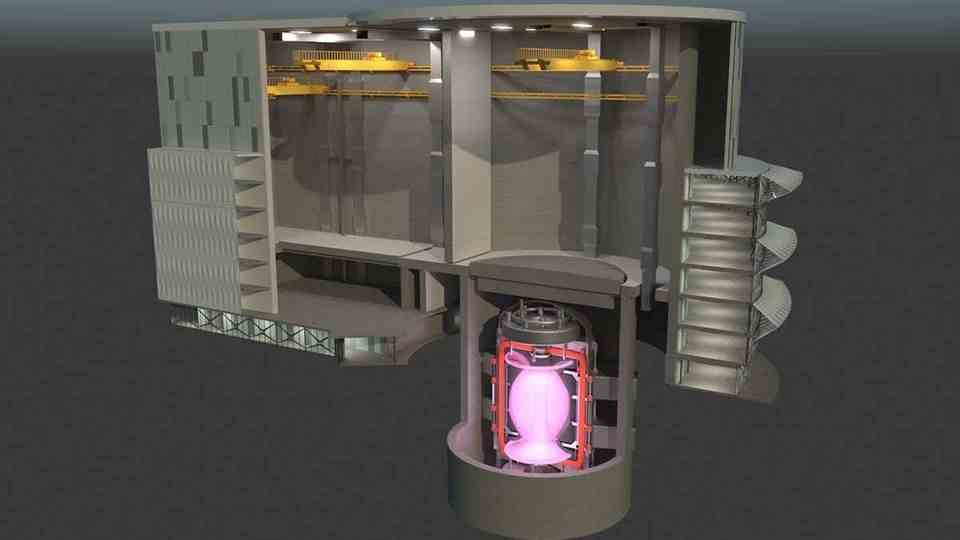nuclear fusion
Cheap reactor takes plasma to 100 million degrees
The reactor is of a manageable size.
© Tokamak Energy / PR
British nuclear fusion company Tokamak Energy says it has broken a world record in nuclear fusion. Their reactor reached a plasma temperature of 100 million degrees Celsius in a spherical installation.
It takes 100 million degrees Celsius to get atoms to fuse. This temperature has already been reached in the large tokamak reactors in South Korea (KSTAR) and China (EAST). So what is special about the new record from Tokamak Energy from Great Britain? For one, their reactor ST40 follows a different design. So far, the tokamak has been built in the form of a large donut, inside which the plasma is pressed into a ring shape and accelerated by magnets.
The British company’s privately funded ST40 tokamak, on the other hand, is based on a flattened spherical shape. The whole device is much smaller and more compact and also cheaper. The cost is a crucial point. Critics fear the following: Even if the large ring-shaped tokamak reactors, which include Europe’s ITER, were to actually work and generate electricity at some point, the electricity would be so expensive that conventional use of fusion energy would not be possible.
Entry at a bargain price
Tokamak Energy points out that its “compact fusion device” was built in just five years at a cost of less than £50m. Tokamak Energy sees the spherical reactors as the optimal way to “provide clean, safe, low-cost, scalable and globally deployable commercial fusion power”.
International research reactors are in danger of being overtaken by private initiatives. No wonder. The state plants were primarily designed for basic research and not for cost-effective power generation.
The entire chamber is much smaller in a spherical device. As a result, these devices require fewer and smaller magnets to keep the plasma in check, and these magnets still achieve higher field strengths. This design results in a smaller, simpler reactor in which the plasma is much easier to keep stable.
Nuclear fusion race
The fusion was made possible because the plasma was monitored with over 25 probes integrated into the ST40. In a next step, the ST40 will be equipped with high-temperature superconductor (ATS) magnets. The use of such magnets is considered a key technique for commercially viable fusion. They only need to be cooled to liquid nitrogen temperature to achieve the zero-resistance conduction effect. The British reactor is scheduled to go on stream in the mid-2020s. That would also be a test device. A first pilot plant for commercial fusion is scheduled to start in the early 2030s.
The British government supports attempts to quickly build a working fusion reactor. Kwasi Kwarteng, State Secretary for Corporate, Energy and Industrial Strategy (BEIS), was correspondingly pleased. He said that fusion energy could be the “ultimate power of the future”.




